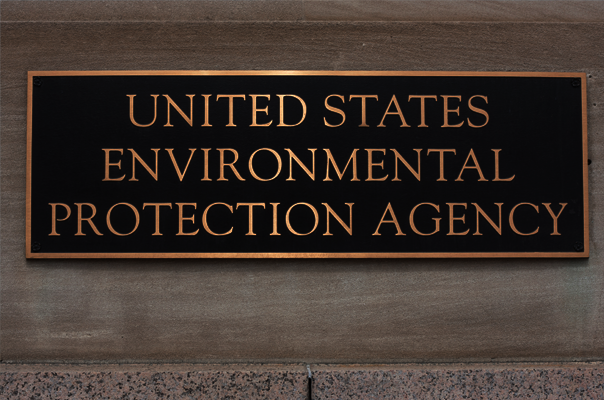EPA Should Rethink Unrealistic 2014 Biofuel Standards
The EPA is planning to set an unrealistic target for cellulosic biofuel production for the 5th year in a row, although the final rule will be postponed until late summer due to an extension of the 2013 deadline for refiners to meet renewable fuel blending requirements from June 30 to September 30. Last year, EPA proposed adjusting the 2014 Renewable Fuel Standard (RFS) cellulosic target to 17 million gallons (15.21 billion gallons of total renewable), down from the original 1.75 billion gallon (18.15 billion gallon total renewable) statutory target set by the Energy Independence and Security Act of 2007. [i]
The EPA has regularly adjusted RFS targets, as the original EISA mandated unreachable levels of 9 billion gallons of total renewable fuel by 2009 and 36 billion gallons by 2022.[ii] However, the EPA’s 2014 target for cellulosic biofuels jumped 11 million gallons from its 2013 target of 6 million gallons, which is both concerning and unrealistic.
With only 72,111 gallons of cellulosic biofuel production in the first quarter of 2014, it is unlikely that even the level that EPA mandated for 2013, 6 million gallons, will be reached, let alone the proposed 17 million gallon target for 2014.[iii] EPA’s targets are therefore still greatly out of touch with reality, and should take into account actual production levels rather than projected production targets.
 Source: EPA 2014 RFS Data, http://www.epa.gov/otaq/fuels/rfsdata/2014emts.htm.
Source: EPA 2014 RFS Data, http://www.epa.gov/otaq/fuels/rfsdata/2014emts.htm.
The chart above suggests that such a difference between EPA targets and actual cellulosic biofuel production in 2014 should not come as a surprise, as the EPA has consistently chosen targets that are greatly above actual cellulosic biofuel production. Rather than assessing actual production from 2013, the EPA instead increased the unmet target from last year by 11 million gallons.[iv]
In EPA’s proposed rule for 2014, the EPA based its adjustments for the cellulosic target on simulations and assessments of projected production volumes instead of considering the fact that EPA’s estimates have overestimated actual production 4 years running by at least 5 million gallons a year. EPA’s simulations for 2014 predicted a range of production from 8 million to 30 million gallons. In the first quarter, only 72,111 gallons of cellulosic biofuel were produced—far less than EPA’s simulation. Despite being wrong 4 years in a row, EPA’s simulation obviously failed to quantify important uncertainties, showing that EPA’s target of 17 million gallons is both arbitrary and ambitious.[v] For example, EPA models suggest that new facilities projected to be brought online in the United States in 2014 will increase the production capacity of the cellulosic industry by 600 percent, seemingly ignoring the reality that sheer capacity is much different than actual production.[vi]
Even one of the leading companies of cellulosic biofuel production cannot meet EPA’s projected production rates. KiOR, the nation’s first commercial-sale cellulosic biofuel plant and one of the most significant actors in the EPA’s calculation of cellulosic fuel volumes for the RFS program, has grossly and consistently underperformed EPA’s expected production. While the company produced a record 385,000 gallons of total fuel in the fourth quarter of 2013 (which was still way below EPA projection), high production costs and insubstantial profits forced the company to freeze its production in the first quarter of 2014.[vii] If the U.S.’s largest cellulosic ethanol provider is considering bankruptcy, defaulting on its loans, and delisting from Nasdaq,[viii] it is an illusion to think that another 16.9 million gallons can be produced by the end of this year. The EPA should seriously reconsider raising the RFS target from 6 million in 2013 to 17 million in 2014, because the target is likely unattainable.
Setting unrealistic targets has led the often referred-to “phantom fuel” situation to persist, in which petroleum refiners are mandated to include renewable fuels that do not exist. Because there is not enough actual production of cellulosic biofuel to meet the RFS target, refiners are required to purchase credits that cost the industry more than $2.2 million in fees last year.[ix] Refiners are not only mandated to blend biofuels that do not exist, but are also forced to purchase credits that may push costs onto consumers. This unnecessary financial drain is the product of unrealistic EPA targets and should be seriously reconsidered in the final decision on the 2014 RFS adjustments taking place at end of this summer.
IER Summer Associate Sarah Pearce authored this post.
[i] Environmental Protection Agency, Federal Register, Vol. 78, No. 230, November 29, 2013, http://www.gpo.gov/fdsys/pkg/FR-2013-11-29/pdf/2013-28155.pdf.
[ii] Environmental Protection Agency, Renewable Fuel Standard (RFS), June 6, 2014, http://www.epa.gov/otaq/fuels/renewablefuels/.
[iii] Environmental Protection Agency, 2014 RFS Data, May 7, 2014, http://www.epa.gov/otaq/fuels/rfsdata/2014emts.htm.
[iv] ibid
[v] See footnote i
[vi] See footnote i
[vii] Amanda Peterka, First U.S. cellulosic plant goes idle as EPA weighs production targets, Governors’ Biofuels Coalition, January 16, 2014, http://www.governorsbiofuelscoalition.org/?p=8108.
[viii] Amanda Peterka, Bankruptcy worries loom as funding dries up at cellulosic plant, Governors’ Biofuels Coalition, March 19, 2014, http://www.governorsbiofuelscoalition.org/?p=8722.
[ix] Reuters, UPDATE 2-U.S. may lower 2013 target for cellulosic ethanol, January 23, 2014, http://www.reuters.com/article/2014/01/23/usa-ethanol-cellulosic-idUSL2N0KX1IS20140123.




